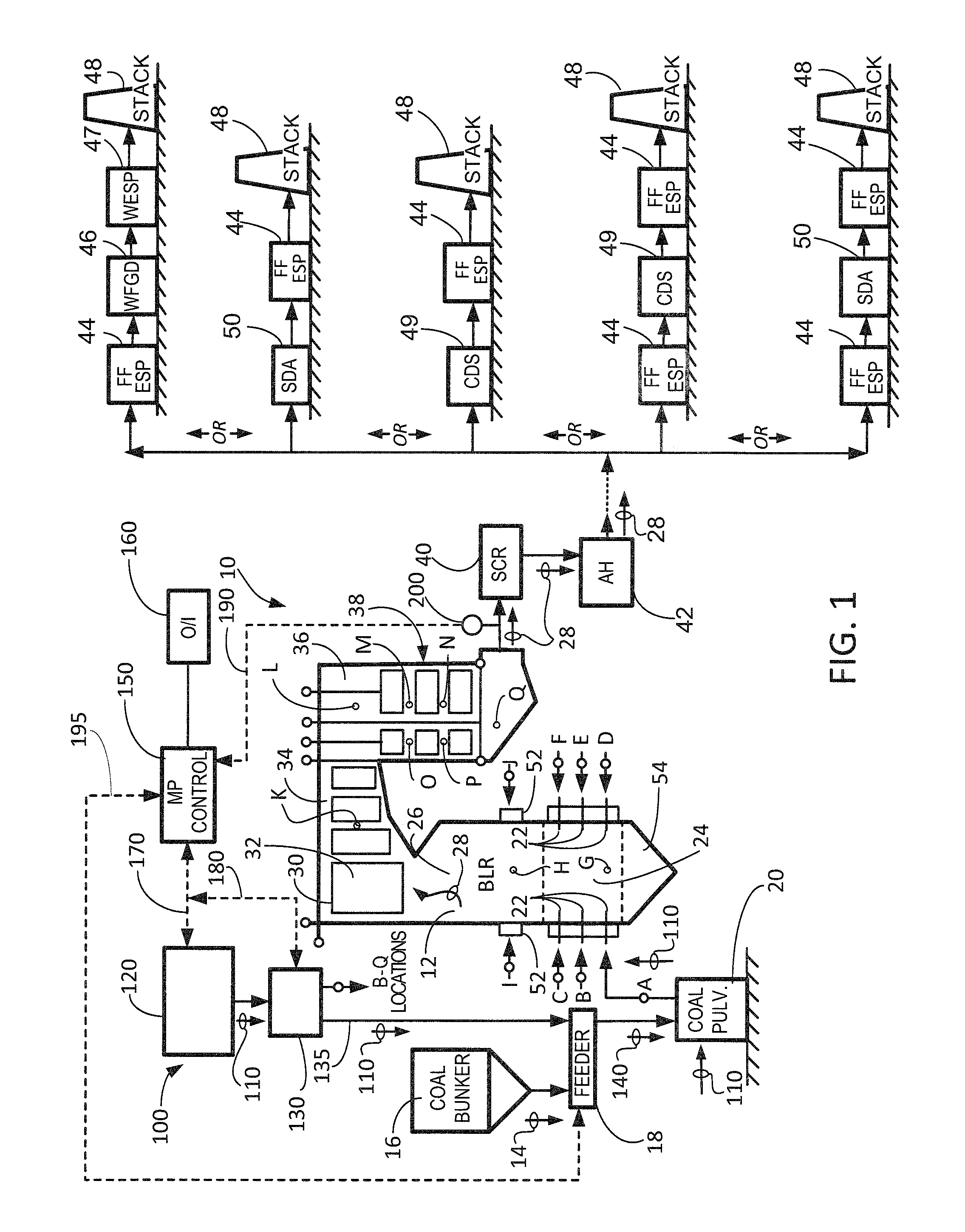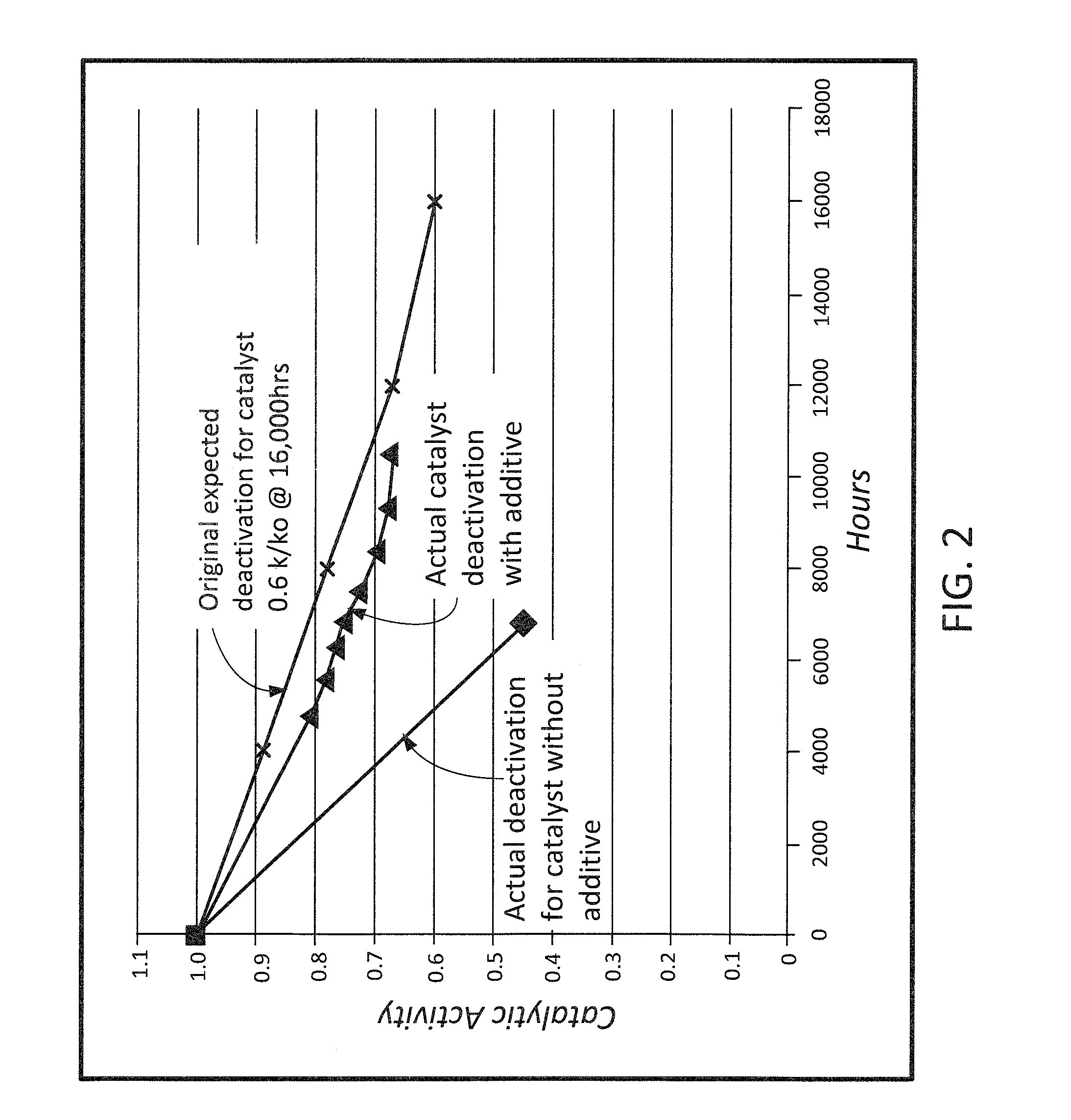System and method for reducing halogen levels necessary for mercury control, increasing the service life and/or catalytic activity of an scr catalyst and/or control of multiple emissions
a technology of scr catalyst and halogen level, applied in the direction of emission prevention, combustion type, separation process, etc., can solve the problems of ammonia level, precious metal catalyst less attractive, and its potential to oxidize, so as to reduce or prevent the poisoning and/or contamination of scr catalyst, and reduce the level of one or more halogens
- Summary
- Abstract
- Description
- Claims
- Application Information
AI Technical Summary
Benefits of technology
Problems solved by technology
Method used
Image
Examples
Embodiment Construction
[0028]The present invention relates generally to the field of emission control equipment for boilers, heaters, kilns, or other flue gas-, or combustion gas-, generating devices (e.g., those located at power plants, processing plants, etc.) and, in particular to a new and useful method and apparatus for: (i) reducing halogen levels necessary to affect gas-phase mercury control; (ii) reducing or preventing the poisoning and / or contamination of an SCR catalyst; and / or (iii) controlling various emissions. In another embodiment, the method and apparatus of the present invention is designed to: (a) achieve a reduction in the level of one or more halogens, or halogen-containing compounds, necessary to affect gas-phase mercury control; (ii) achieve protection of, increase the catalytic activity, and / or increase the catalytic life span of an SCR catalyst; and / or (iii) achieve control of various emissions from a combustion process (e.g., control of selenium emissions). In still another embodi...
PUM
| Property | Measurement | Unit |
|---|---|---|
| temperature | aaaaa | aaaaa |
| temperature | aaaaa | aaaaa |
| concentration | aaaaa | aaaaa |
Abstract
Description
Claims
Application Information
 Login to View More
Login to View More - R&D
- Intellectual Property
- Life Sciences
- Materials
- Tech Scout
- Unparalleled Data Quality
- Higher Quality Content
- 60% Fewer Hallucinations
Browse by: Latest US Patents, China's latest patents, Technical Efficacy Thesaurus, Application Domain, Technology Topic, Popular Technical Reports.
© 2025 PatSnap. All rights reserved.Legal|Privacy policy|Modern Slavery Act Transparency Statement|Sitemap|About US| Contact US: help@patsnap.com


